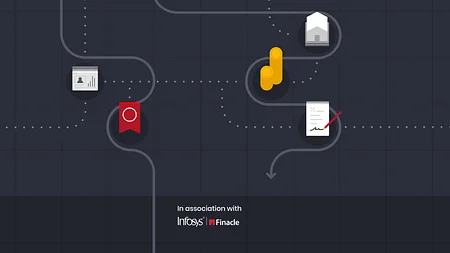Inspiring business model innovation in banking

Guest author Sanat Rao shares his thoughts on banking business model innovation following our recent report Developing innovative digital banking business models in association with Infosys Finacle.
Most CEOs I speak to these days have a common concern - staying relevant in a banking world that’s going through change like never before.
While the industry is no stranger to disruption, present-day CEOs are finding that this time, the only adequate response is to revise the banking business model through and through, and not selectively, as they were doing before.
There’s no aspect of banking that is untouched by the new business models possible today. To see how this is playing out, consider just three things, namely distribution, cost and innovation:
There’s no aspect of banking that is untouched by the new business models possible today.
Distribution: Between 2000 and 2020, banking transactions went from being 50% in-branch to 90% digital. Today, they have started migrating to non-bank, third-party channels as open banking and embedded finance take hold on a staggering scale. For example, in India, payment transactions on the Unified Payments Interface exceeded 3.2 billion in August, with almost 92% originating in the apps of non-bank players Google Pay, Walmart-owned PhonePe and homegrown fintech Paytm, despite the availability of 50+ UPI apps from incumbent banks. This is a preview of what banking will look like globally in the near future.
Cost: Innovative digital business models have rewritten the cost-efficiency norms in banking. 20 years ago, a cost-to-income ratio between 40 and 60% was considered respectable. The biggest incumbent banks in the world continue to have a cost-to-income ratio of about 50%, on average. This contrasts sharply with digital-only banks, whose ratios are about half of that. In order to match the new efficiency benchmarks, established banks must leverage digital transformation to drive strategic alignments, cut back on physical infrastructure, make business processes smarter and increase workforce productivity.
Innovation: New non-traditional entrants are leading innovation from the front. Respondents to the latest EFMA Infosys Finacle Innovation in Retail Banking survey were clear that in 2025, the banking innovation honours would belong to technology companies, digital commerce platforms, challengers and fintechs, in that order. Incumbent financial institution stood sixth in the ranking. Non-traditional players riding on technology-led models are differentiating their propositions through innovation, and systematically diminishing the competitive advantages – branch network, user base, deep pockets – of incumbents. This explains why banks rated their own innovation credentials so poorly: only 9% said they were ‘innovation pioneers’ and another 32% said they were ‘fast followers’, leaving 59% in the ‘mainstream’ and ‘laggard’ categories.
With the pandemic intensifying disruption, the gap between the digital leaders and laggards is widening rapidly. This poses serious problems for bank CEOs on the wrong side of the divide. For them, the need for digital business model innovation is here and now. And we are not talking small tactical moves, which are clearly not enough – but complete reinvention.
With the pandemic intensifying disruption, the gap between the digital leaders and laggards is widening rapidly.
With few things more important to the industry today than business model innovation, we partnered with 11:FS to drive attention on the developments on this front. A report with the findings of this research puts the spotlight on:
How digital business ecosystems are reshaping banking
The new opportunities available to incumbents and new entrants
Eight new business model archetypes, such as Banking as a Service (BaaS), Marketplace Banking, Banking Utilities, Digital Financial Advisor, and more
Frameworks for strategizing, and executing business model innovation
Examples from global pioneers that are creating, delivering and capturing new value
I hope you will find the research findings, insights of the interviewed industry leaders and case studies both interesting and useful. We hope that this inaugural edition will become an annual feature that inspires banking innovation for years to come.
Do share your feedback with us.
Get yourself a copy of the full report here.



